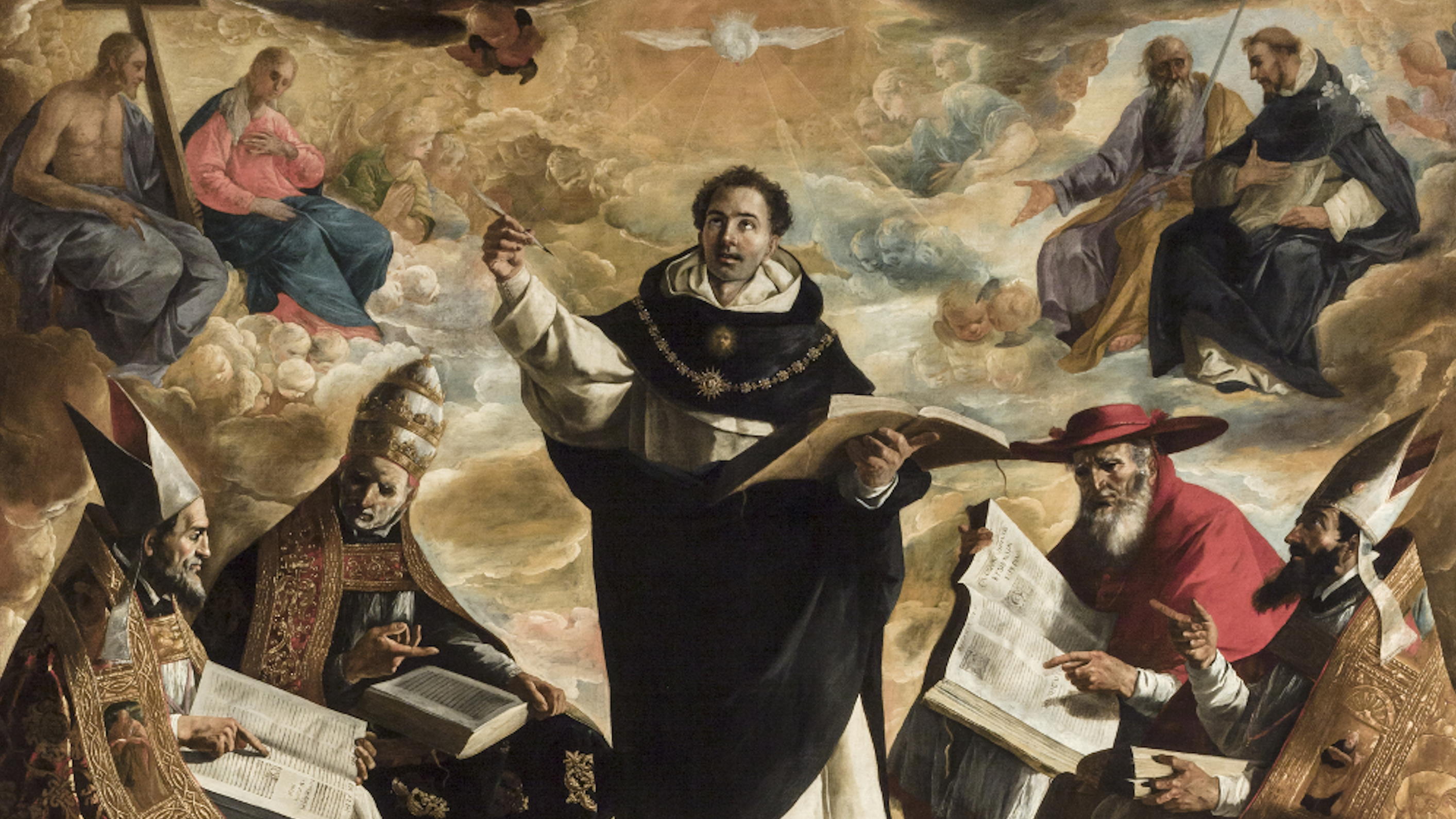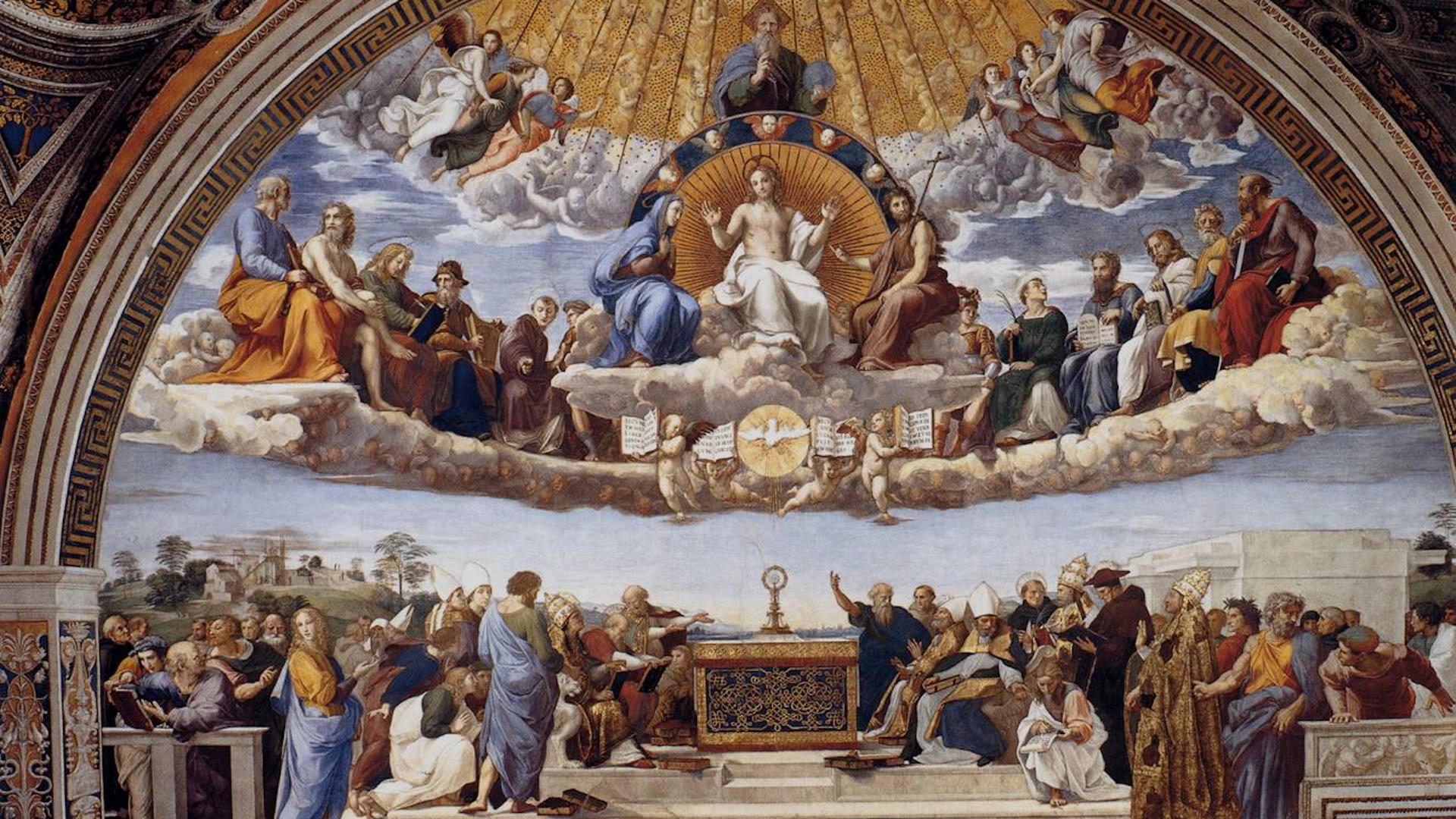The following text is the transcript of our Youtube video Do Catholics and Protestants use the same Bible?.
This video is part of a series on “The Sources of Faith”. You can find all the videos in the series here.
Welcome to Catholic Hub! I’m David, and in today’s video I’m going to talk about the Canon of Holy Scripture.
No, not that kind of cannon! What we’re talking about is simply the official list of books that make up the Bible. Contrary to what you might think, not all so-called Bibles are the same and there are actually some major differences between Catholic and Protestant versions of the Bible.
First of all, let’s quickly go over the history of the Sacred Canon.
The books of the Bible were written by different men over the course of over a thousand years - starting from the time of Moses, around fourteen hundred years before Christ, until the death of the last Apostle, St John, around the year one hundred after Christ.
The Church Collected and Preserved the Books of the Bible
The books of the Old Testament were collected and preserved by the highest religious authorities of the Jews. The universal belief of the Jews was that these writings were of divine origin and this was confirmed by Christ and His Apostles.
The Church added to the books of the Old Testament:
- the four Gospels,
- the Acts of the Apostles,
- the Letters or ‘Epistles’ written by the Apostles to various Christian communities and individuals,
- and the revelations made by God to St John.
So in this way, the Bible was put together and preserved by the Church.
The Church Drew Up an Official List of the Sacred Books
During the two centuries before Christ and the early centuries after Christ, a number of books were composed which claimed to be divinely inspired. These books are called “apocryphal”, which comes from the Greek apokryphos, meaning “hidden” or “secret”. They mostly contained pious and harmless legends, and supposed saying and doings of Christ and of those connected to Him, like the Blessed Virgin Mary, St Joseph, the Apostles and their disciples.
Some of the early Fathers of the Church held these apocrypha in high esteem, but others absolutely rejected them, and to settle this controversy, the Church declared definitively which writings must be acknowledged by all as inspired books. And this official list is called the Canon of the Bible, which comes from the Greek word kanon which means a “rule” or a “standard”.
This first Canon of the Sacred Writings was drawn up by the Council of Hippo in the year 393, and then it was confirmed by the Council of [Carthage] in [397]1, and later on, by the Council of Trent in the sixteenth century. According to these official decrees of the Church, the Bible contains seventy-two books, forty-five in the Old Testament and twenty-seven in the New Testament.
Division of the Bible According to Content
Now let’s talk about the types of writings that are contained in the Bible. The books of the Bible can be divided into three main categories:
The first category are the books that relate facts and events and these are called historical.
The second category are the books that teach doctrine and give wholesome instructions for leading a holy life, and these are known as doctrinal books.
Finally, other books foretell future events and therefore these are called prophetical books.
And I will just point out here that these terms historical, doctrinal and prophetical are used based on the more prominent features of the books that they classify and this doesn’t mean that a book of one category can’t contain elements of the other categories. For example, the historical books contain many important doctrines and also prophecies, some of the prophetical books contain some history, and some of the doctrinal books, especially the Psalms, include certain prophecies as well.
In the following lists that I’m going to put on screen, the books of the Bible are sorted according to their contents.
Catholic and Protestant Bibles
I said earlier that there are major differences between the Catholic and Protestant canons. These differences mainly come from Martin Luther. Luther is considered the father of the Protestant Reformation and among his other departures from catholic belief, he rejected several books of the Old Testament - specifically, Tobias, Judith, Wisdom, Ecclesiasticus, Baruch, the two books of Machabees, and parts of Daniel and Esther. This was because they contained too many things which contradicted his own false teachings, such as his denial of the dogma of purgatory, referenced in 2 Machabees, 12:46 :
It is a holy and wholesome thought to pray for the dead, that they may be loosed from sins.
2 Machabees, 12:46
All Protestant denominations followed in Luther’s footsteps, and to this day, these books are omitted from the Protestant Bible, or at most they’re printed in an appendix.
Luther also rejected Hebrews, James, Jude and the Apocalypse of St John from the New Testament. He called the epistle of St James a quote, “straw epistle” because it contradicted his teaching on justification by faith alone. However, these books were later on accepted by Protestants and so most Protestant Bibles contain the same books in the New Testament as the Catholic Bible.
It’s worth noting that the process by which Luther and other Protestants decided which books really form part of Holy Scripture is the same as that whereby they proclaim that Scripture is the only source of faith - their arguments are founded on their own personal opinion and not on any kind of objective authority. Luther removed certain books from the sacred canon simply because they went against his own personal beliefs.
The Catholic understanding of Holy Scripture is that we are unable to have any certainty as to its origins unless we also admit Tradition as a second source of faith, through which we can trace Holy Scripture, as well as all of the Church’s teachings, back to the Apostles and Our Lord Jesus Christ Himself.
Any attempt by Protestants to return to the teachings of the so-called primitive church will result in the realisation that the same canon of Scripture has been held since the time of the Apostles until the present day.
That’s the end of this episode. In an upcoming video we’ll talk more about Tradition as the second Source of Faith and why it’s essential for our belief in the teachings of the Catholic Church. So please do subscribe to my channel so you don’t miss future videos, and give this video a thumbs up if you appreciated it. Thanks for watching, and I’ll see you in the next one.
-
In our original video we referred to the Council of Rome in 394. This is according to Chief Truths of the Faith by Fr Laux. However, this seems to be an error, as we have not found any mentions elsewhere of a Council of Rome in 394. We think that Fr Laux meant to refer either to the Council of Rome held in 382 under Pope Damasus I and attended by St. Jerome, which pronounced on the Canon of Scripture, or to the Council of Carthage which resumed in 394 and which pronounced on the Canon of Scripture in 397. ↩





Comments